Death and state funeral of Winston Churchill
Sir Winston Churchill died on 24 January 1965, aged 90.[1][2] His was the first state funeral for a non-royal family member since Lord Carson in 1935, and as of 2020 it remains the most recent state funeral in the United Kingdom. The official funeral lasted for four days.[3] Planning for the funeral, known as Operation Hope Not, began 12 years before Churchill's death. It was initiated after Churchill's stroke in 1953 while in his second term as the Prime Minister of the United Kingdom.[4] After several revisions due to Churchill's continued survival, the plan was issued on 26 January 1965, two days after his death.

By decree of Queen Elizabeth II, his body lay in state at Westminster Hall for three days from 26 January. On 30 January, the order of funeral was held at St Paul's Cathedral. From there the body was transported by water along the River Thames to Waterloo station, accompanied by military salutations. In the afternoon he was buried at St Martin's Churchyard at Bladon, the resting place of his ancestors and his brother. Attended by representatives from 120 countries, 6,000 people, and unusually by the Queen, more than 1,000 police and security personnel, involving nine military bands, 18 military battalions, 16 Royal Air Force English Electric Lightning fighter jets, a special boat MV Havengore and a train hauled by Winston Churchill, homage paid by 321,360 people, and witnessed by over 350 million people, it was the largest state funeral in history.[5][6]
Background and funeral plan
Voted as the greatest Briton in a BBC poll in 2002, Sir Winston Churchill is remembered for leading his country (with the Allies) to victory as Prime Minister of the United Kingdom during the Second World War. In June 1953, during his second term as Prime Minister, he had a severe stroke at a dinner party at Downing Street. Unknown to his guests, he collapsed and was left partially paralysed. The family kept the incident secret.[7] Among the few who were informed of the news was Queen Elizabeth II, who had occupied the throne for just a year. She instructed The 16th Duke of Norfolk, who, as Earl Marshal, was in charge of state funerals, to make preparations in the event of Churchill's death that should be "on a scale befitting his position in history".[8] A meticulous and confidential plan titled Operation Hope Not was prepared.[9] Churchill survived the next 12 years, during which necessary modifications were frequently made. The final documents, titled State Funeral of the Late Sir Winston Leonard Spencer Churchill, K.G., O.M., C.H., were issued on 26 January 1965, two days after Churchill's death. The documents dictated the entire course of the funeral down to the minutest detail.[10]
Illness and death
Churchill died in the morning of Sunday 24 January 1965 in his home at 28 Hyde Park Gate, London. His physician Lord Moran announced the death at 8:35am. Since 1949, he had suffered eight strokes. The last was 15 January 1965, from which he never recovered. After the stroke, he was mostly in a coma; his last words were to his son-in-law Christopher Soames: "I'm bored with it all." The BBC announced the death at 9:00 am.[11] The Queen immediately sent a letter of condolence to Lady Churchill, saying:
The whole world is the poorer by the loss of his many-sided genius while the survival of this country and the sister nations of the Commonwealth, in the face of the greatest danger that has ever threatened them, will be a perpetual memorial to his leadership, his vision and indomitable courage.[12]
The next day members of the House of Commons paid tribute.[13][14]
Embalming
J. H. Kenyon Ltd, of Paddington, London, the funeral directors to the Royal Household since 1928, were tasked with preparing Churchill's remains for the funeral. Desmond Henley, the company's chief embalmer, went to Churchill's Hyde Park Gate home to oversee the process.[15] Churchill's body was embalmed in the same room where he had died. When the process was completed, the remains were dressed in his silk pyjamas and dressing robe and placed back into his bed. Churchill would lie in repose in private at his home until 9:00 pm Tuesday evening when Kenyon's staff transported his remains to Westminster Hall for public viewing.[16]
Funeral programme
Lying in state
The funeral started on Tuesday 26 January 1965. By 8:30 pm police and security personnel had taken up their positions in what The Daily Telegraph reported as "the most extensive security operation of this sort ever undertaken in England."[6] At 9:15 pm Churchill's body was transported from his London home to Westminster Hall for the lying in state. It was led by Cameron Cobbold, 1st Baron Cobbold, the Lord Chamberlain in the company of family members.[14] He was placed on a catafalque before Lady Churchill and the Earl Marshall. At 9:00 pm the first watch was mounted in the hall by the Grenadier and Coldstream Guards. In the subsequent days the Royal Navy and five regiments of foot guards also took turns.[17]
The lying-in-state lasted from Wednesday 27 January to 06:00 am on 30 January,[18] during which Westminster Hall was kept open for 23 hours daily. An hour was reserved for cleaning. The queue was most times more than one mile long, and the waiting time was about three hours;[14] 321,360 people came to pay their respects.[5][19]
Order of service
The funeral service on Saturday 30 January began with the chiming of Big Ben at 9:45am. The clock was muted for the rest of the day. Ninety cannon salutes were fired at Hyde Park to mark the ninety years of Churchill's life.[3][20] The coffin was placed on a gun carriage and draped with the Union Flag upon which was the insignia of the Order of the Garter on top of a black cushion. It was carried from the hall by a bearer party of eight guards from the 2nd Battalion Grenadier Guards. The procession started upon a drum beat by the Royal Navy and was then led by the Royal Air Force and the Foot guards. Following the gun carriage was Lady Churchill in the Queen's town coach and her son Randolph Churchill on foot;[21] followed by family members and Churchill's private secretary, Anthony Montague Browne.[14] The march processed through Whitehall, Trafalgar Square, the Strand, Fleet Street, and up Ludgate Hill. A marching band consisted of three officers and 96 soldiers of the Scots Guards 2nd Battalion. Banners of the Danish resistance movements were lowered in respect at the Cenotaph.[21] Altogether 2,500 soldiers and civilians took part in the procession, while four half-companies of soldiers lined the streets.[17] Four majors of the Queen's Royal Irish Hussars were assigned to carry Churchill's medals, orders and decorations.[3]
After an hour, the service was held at St Paul's Cathedral. 3,500 people attended, including the Queen, who did not normally attend funerals of commoners. Protocol also dictated that the Queen be the last to arrive at an event, but on this occasion she put royal etiquette aside, arriving before Churchill's coffin was in the church.[22] There were 12 pallbearers in the cathedral, including Louis Mountbatten, 1st Earl Mountbatten of Burma, the Prime Minister of Australia Robert Menzies, and the former British Prime Ministers Clement Attlee, Anthony Eden and Harold Macmillan.[21] It was the largest gathering of dignitaries in history until the 1980 funeral of Josip Broz Tito and the 2005 funeral of Pope John Paul II, with officials from more than 112 countries attending. Guests included the French President Charles de Gaulle, the Canadian Prime Minister Lester B. Pearson, the Prime Minister of Rhodesia Ian Smith, the former US president Dwight D. Eisenhower, many other past and present heads of state and government, and members of multiple royal families. Sir Robert Menzies, then the longest-serving Commonwealth Prime Minister, who had known Churchill well in wartime, paid tribute to his colleague as part of the funeral broadcast, as did President Eisenhower.[3] Churchill's favourite hymns were sung, including the "Battle Hymn of the Republic".[14]
At the thanksgiving, Menzies recited a eulogy:
In the whole of recorded history this [the Second World War] was, I believe, the one occasion when one man, with one soaring imagination, with one fire burning in him, and with one unrivalled capacity for conveying it to others, won a crucial victory not only for the Forces (for there were many heroes in those days) but for the spirit of human freedom. And so, on this day, we thank him, and we thank God for him."[23]
Burial
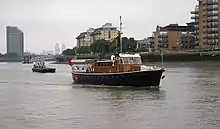
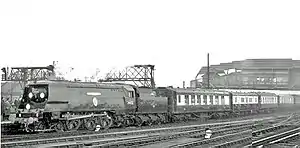
After the church service, Churchill's coffin was carried to the Tower of London. The bearer party was led by 60 pipers. The Royal Artillery fired a 19-gun salute acknowledging Churchill's positions (as head of government and Lord Warden of the Cinque Ports). The procession moved to Tower Pier at the Festival Pier, where the coffin was taken on board the MV Havengore. Naval ratings 'piped the side' and the Royal Marine band played the musical salute due a former First Lord of the Admiralty, Rule Britannia. As his coffin passed up the River Thames, more than 36 dockers lowered their crane jibs in a salute as the vessel passed.[5] This was an unrehearsed procedure.[17] The London dockers were paid to lower their cranes.[24] Sixteen Royal Air Force English Electric Lightning fighter jets also flew above in formation as the boat sailed.[3]
From Waterloo Station, the coffin was carried by a specially prepared train, the locomotive of which was named Winston Churchill, to its final destination in Oxfordshire.[25][26] The hearse van, No. S2464S, had been set aside in 1962 specifically for the funeral train.[27][28] In the fields along the route, and at the stations through which the train passed, thousands stood in silence to pay their last respects. Churchill was interred in St Martin's Churchyard in a private family ceremony. He was laid in a grave near to his parents and his brother.[29]
Dignitaries
Churchill's funeral was the largest gathering of world leaders during the 1960s—and, at that time, in history. Representatives from 112 countries and many organisations attended, including 5 kings, 2 queens, 1 emperor, 1 grand duke, 2 queen consorts, 15 presidents, 14 prime ministers and 10 former leaders. The only notable absentee was Lyndon B. Johnson, President of the United States, who was ill at the time. The official representative of the United States was Earl Warren, Chief Justice of the United States.[30] China was the only country not to send representatives to the funeral.
Some of the guests were:
 U Thant, Secretary-General of the United Nations
U Thant, Secretary-General of the United Nations René Maheu, Director General of UNESCO
René Maheu, Director General of UNESCO- Arnold Smith, Commonwealth Secretary-General
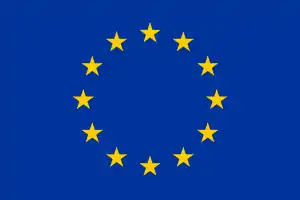 Jean Rey, President of the European Commission
Jean Rey, President of the European Commission Queen Elizabeth II, HRH Duke of Edinburgh, Prince Charles and Rt Hon Harold Wilson, Prime Minister of the United Kingdom
Queen Elizabeth II, HRH Duke of Edinburgh, Prince Charles and Rt Hon Harold Wilson, Prime Minister of the United Kingdom Former Prime Ministers Rt Hon Lord Attlee, Rt Hon Earl of Avon, Rt Hon Harold Macmillan, and Rt Hon Sir Alec Douglas-Home
Former Prime Ministers Rt Hon Lord Attlee, Rt Hon Earl of Avon, Rt Hon Harold Macmillan, and Rt Hon Sir Alec Douglas-Home Éamon de Valera, President of Ireland, and Tánaiste Frank Aiken, T.D., Minister for External Affairs
Éamon de Valera, President of Ireland, and Tánaiste Frank Aiken, T.D., Minister for External Affairs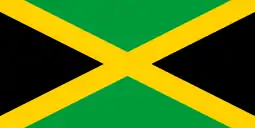 Sir Alexander Bustamante, Prime Minister of Jamaica
Sir Alexander Bustamante, Prime Minister of Jamaica Bahi Ladgham, Prime Minister of Tunisia
Bahi Ladgham, Prime Minister of Tunisia.svg.png.webp) Rt Hon Sir Robert Menzies, Prime Minister of Australia
Rt Hon Sir Robert Menzies, Prime Minister of Australia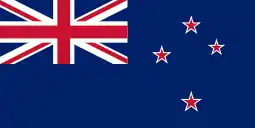 Rt Hon Keith Holyoake, Prime Minister of New Zealand
Rt Hon Keith Holyoake, Prime Minister of New Zealand Frederick, King of Denmark and Jens Otto Krag, Prime Minister of Denmark
Frederick, King of Denmark and Jens Otto Krag, Prime Minister of Denmark Olav, King of Norway and Harald, Crown Prince of Norway
Olav, King of Norway and Harald, Crown Prince of Norway Brigade General Charles de Gaulle, President of France
Brigade General Charles de Gaulle, President of France Alfons Gorbach, Chancellor of Austria
Alfons Gorbach, Chancellor of Austria Hans-Peter Tschudi, President of Switzerland
Hans-Peter Tschudi, President of Switzerland Giuseppe Saragat, President of Italy
Giuseppe Saragat, President of Italy Urho Kekkonen, President of Finland
Urho Kekkonen, President of Finland Ludwig Erhard, Chancellor of West Germany
Ludwig Erhard, Chancellor of West Germany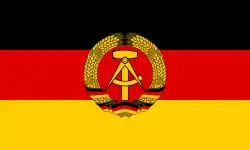 Walter Ulbricht, Chairman of the State Council of East Germany
Walter Ulbricht, Chairman of the State Council of East Germany.svg.png.webp) Baudouin, King of the Belgians
Baudouin, King of the Belgians.svg.png.webp) Constantine, King of the Hellenes, Anne Marie, Queen of the Hellenes, Frederica, Dowager Queen of the Hellenes
Constantine, King of the Hellenes, Anne Marie, Queen of the Hellenes, Frederica, Dowager Queen of the Hellenes Juliana, Queen of the Netherlands and Bernhard, Prince Consort of the Netherlands
Juliana, Queen of the Netherlands and Bernhard, Prince Consort of the Netherlands Jean, Grand Duke of Luxembourg
Jean, Grand Duke of Luxembourg.svg.png.webp) Michael, King of Romania
Michael, King of Romania.svg.png.webp) Petar Stambolić, Prime Minister of Yugoslavia
Petar Stambolić, Prime Minister of Yugoslavia Archbishop Egidio Vagnozzi, Apostolic Delegate of Vatican City
Archbishop Egidio Vagnozzi, Apostolic Delegate of Vatican City Zalman Shazar, President of Israel
Zalman Shazar, President of Israel.svg.png.webp) Rt Hon Lester B. Pearson, Prime Minister of Canada
Rt Hon Lester B. Pearson, Prime Minister of Canada.svg.png.webp) C. R. Swart, State President of South Africa
C. R. Swart, State President of South Africa Habib Bourguiba, President of Tunisia
Habib Bourguiba, President of Tunisia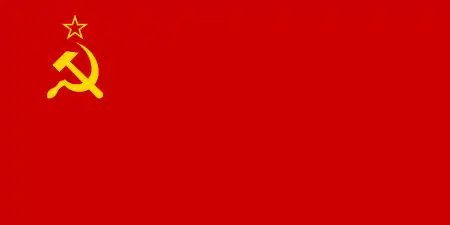 Anastas Mikoyan, Premier of the Soviet Union
Anastas Mikoyan, Premier of the Soviet Union.svg.png.webp) Haile Selassie I, Emperor of Ethiopia
Haile Selassie I, Emperor of Ethiopia Tage Erlander, Prime Minister of Sweden
Tage Erlander, Prime Minister of Sweden.svg.png.webp) General Agustín Muñoz Grandes, Deputy Prime Minister of Spain
General Agustín Muñoz Grandes, Deputy Prime Minister of Spain Rear Admiral Américo Tomás, President of Portugal
Rear Admiral Américo Tomás, President of Portugal%253B_Flag_of_Rhodesia_(1965%E2%80%931968).svg.png.webp) Ian Smith, Prime Minister of Southern Rhodesia
Ian Smith, Prime Minister of Southern Rhodesia.svg.png.webp) Kenneth Kaunda, President of Zambia
Kenneth Kaunda, President of Zambia General İsmet İnönü, Prime Minister of Turkey
General İsmet İnönü, Prime Minister of Turkey Abdelkadir Chanderil, President of Algeria
Abdelkadir Chanderil, President of Algeria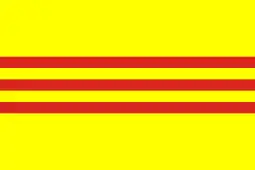 Nguyễn Văn Thiệu, President of South Vietnam
Nguyễn Văn Thiệu, President of South Vietnam.svg.png.webp) Hayato Ikeda, Prime Minister of Japan
Hayato Ikeda, Prime Minister of Japan.svg.png.webp) General Park Chung-hee, President of South Korea
General Park Chung-hee, President of South Korea.svg.png.webp) Diosdado Macapagal, President of the Philippines
Diosdado Macapagal, President of the Philippines Prince Norodom Kantol, Prime Minister of Cambodia
Prince Norodom Kantol, Prime Minister of Cambodia General of the Army Dwight D. Eisenhower, former President of the United States
General of the Army Dwight D. Eisenhower, former President of the United States
In addition to that, delegations of about 150 ambassadors and low-level diplomats were also present at the funeral.
Aftermath
As Lady Churchill was retiring to bed she said to her daughter Mary (Lady Soames, Baroness Soames), "It wasn't a funeral, Mary – it was a triumph."[14]
The Scots Guards Battalion Digest reported, stating, "without a doubt the State Funeral of 30 January was the most moving parade that the majority of the battalion had ever taken part in or observed. Perfect timing, detailed rehearsal and greater dignity all combined to make it a proud and wonderful occasion."[17]
Within a week, more than 100,000 people had visited the grave.[5] In 1998 Churchill's tombstone had to be replaced due to the large number of visitors over the years having eroded it and its surrounding area. A new stone was dedicated in 1998 in a ceremony attended by members of the Spencer-Churchill family.[31]
Because the funeral took place on 30 January, also the anniversary of Franklin D. Roosevelt's birth, people in the United States marked it by paying tribute to Churchill's friendship with Roosevelt. Those who attended a service at Roosevelt's grave at his home in Hyde Park, New York, heard speakers at the service talk about the coincidence of the date in the records of two leaders who shared history.[32]
Estate at death
On 9 February 1965, in London, probate was granted on Churchill's estate to Lady Churchill, Mary Soames, and John Rupert Colville, with a valuation for probate of £304,044, equivalent to £5,930,235 in 2019.[33]
References
- "Funeral". winstonchurchill.org. International Churchill Society. Archived from the original on 21 November 2018. Retrieved 30 December 2018.
- "Remembering Winston Churchill: About this collection". BBC. Archived from the original on 2 December 2018. Retrieved 30 December 2018.
- Klein, Christopher (30 January 2015). "Winston Churchill's Funeral, 50 Years Ago". History. Archived from the original on 1 June 2016. Retrieved 27 May 2016.
- Dockter, Warren (30 January 2015). "Winston Churchill's funeral was 12 years in the planning". The Telegraph. Archived from the original on 6 August 2016. Retrieved 27 May 2016.
- Brown, Aaron (30 January 2015). "Funeral of Sir Winston Churchill: 50 years since Britain buried its iconic wartime leader". Express. Retrieved 3 January 2019.
- Dodds, Laurence (30 January 2015). "As it happened: The state funeral of Winston Churchill, January 30, 1965". The Telegraph. Archived from the original on 16 February 2018. Retrieved 3 January 2019.
- Furness, Hannah (27 February 2016). "Sir Winston Churchill's family kept his strokes hidden, new drama reveals". The Daily Telegraph. ISSN 0307-1235. Retrieved 7 January 2019.
- Roberts, Andrew (18 January 2015). "The death of Winston Churchill was the day the Empire died". The Telegraph. Archived from the original on 31 December 2018. Retrieved 30 December 2018.
- Docktor, Warren (30 January 2015). "Winston Churchill's funeral was 12 years in the planning". The Daily Telegraph. Retrieved 6 January 2019.
- Smith, Louie (17 February 2017). "Top secret plans for Winston Churchill's funeral revealed after 50 years". Mirror. Archived from the original on 29 December 2018. Retrieved 29 December 2018.
- https://audioboom.com/posts/2772856-death-of-sir-winston-churchill
- Croft, Rodney J. (2014). Churchill's Final Farewell: The State and Private Funeral of Sir Winston Churchill. London, UK: Croft Publishing. pp. 54–55. ISBN 978-1-84396-332-5. Archived from the original on 1 January 2019. Retrieved 3 January 2019.
- "Death of Sir Winston Churchill". Parliamentary Debates (Hansard). House of Commons. 25 January 1965. col. 667–679.
- Soames, Nicholas (30 January 2015). "My grandfather, Winston Churchill, was buried fifty years ago today. It wasn't a funeral – it was a triumph". The Telegraph. Archived from the original on 10 March 2016. Retrieved 3 January 2019.
- "The Death and State Funeral of Sir Winston Leonard Spencer Churchill". connection.ebscohost.com. Archived from the original on 16 March 2014. Retrieved 15 June 2017.
- Todd Van Beck, "The Death and State Funeral of Sir Winston Leonard Spencer Churchill", part II, in Canadian Funeral News (October 2012), Vol. 40 Issue 10, p. 10 (online Archived 16 March 2014 at the Wayback Machine)
- Murray, Naylor (1995). Among Friends: The Scots Guards 1956–1993. London, UK: Leo Cooper. pp. 54–56. ISBN 978-0-850-52455-0.
- Churchill’s Final Farewell: The State and Private Funeral of Sir Winston Churchill (winstonchurchill.org), accessed 6 Feb 2021
- "1965: Last farewell to Churchill". BBC. Archived from the original on 3 January 2008. Retrieved 3 January 2019.
- "From the Monitor archives: Britain bids Winston Churchill farewell". Christian Science Monitor. 30 January 2015. ISSN 0882-7729. Retrieved 7 January 2019.
- Rose, Norman (2009). Churchill : an Unruly Life. London, UK: Tauris Parke. pp. 1–2. ISBN 978-0-85771-139-7.
- https://www.express.co.uk/news/royal/922112/queen-elizabeth-winston-churchill-royal-protocol-funeral-channel-5-documentary
- "Sir Winston Churchill's Funeral: Eulogy By Sir Robert Menzies". australianpolitics.com. Archived from the original on 25 July 2017. Retrieved 3 January 2019.
- https://www.independent.co.uk/arts-entertainment/tv/news/churchill-the-nation-s-farewell-of-course-the-dockworkers-were-paid-to-dip-cranes-in-tribute-to-10010382.html
- "Churchill's final journey". National Railway Museum. Archived from the original on 9 May 2016. Retrieved 30 May 2016.
- "Sir Winston Churchill's Funeral Train". Southern E-Group. Archived from the original on 8 January 2008. Retrieved 26 February 2007.
- Gould, David (1992). Southern Railway Passenger Vans. Headington: Oakwood Press. p. 77,80,85. ISBN 0-85361-428-8.
- King, Mike (2003), An Illustrated History of Southern Coaches, Horsham, Surrey: Oxford Publishing Company, p. 194, 223, ISBN 0-86093-570-1
- Addison, Paul (2006). Churchill: The Unexpected Hero. Oxford: Oxford University Press Inc. p. 245. ISBN 978-0-19-929743-6. Archived from the original on 17 November 2018. Retrieved 30 December 2018.
- Gorny, Molly. "Commemorating the historic Winston Churchill funeral". Digital Dying. Funeralwise LLC. Retrieved 29 February 2020.
- "New grave honours Churchill". BBC News Online. 8 May 1998. Archived from the original on 11 March 2004. Retrieved 26 February 2007.
- "Roosevelt's Birth Marked At Hyde Park Graveside". The New York Times. Associated Press. 31 January 1965. p. 33.
- “CHURCHILL the right honourable sir Winston Leonard Spencer K.G, O.M, C.H.” in Probate Index for England and Wales, 1965, at probatesearch.service.gov.uk, accessed 15 April 2020
External links
| Wikimedia Commons has media related to Funeral of Winston Churchill. |
- Original BBC footage of Churchill's funeral
- Churchill's Funeral - Order of Service - UK Parliament Living Heritage
- Churchill’s Final Farewell: The State and Private Funeral of Sir Winston Churchill - winstonchurchill.org
- "Winston Churchill's funeral – in pictures" by The Guardian
- Funeral profile at St Paul's
- "Churchill's Final Journey" by Railway Museum